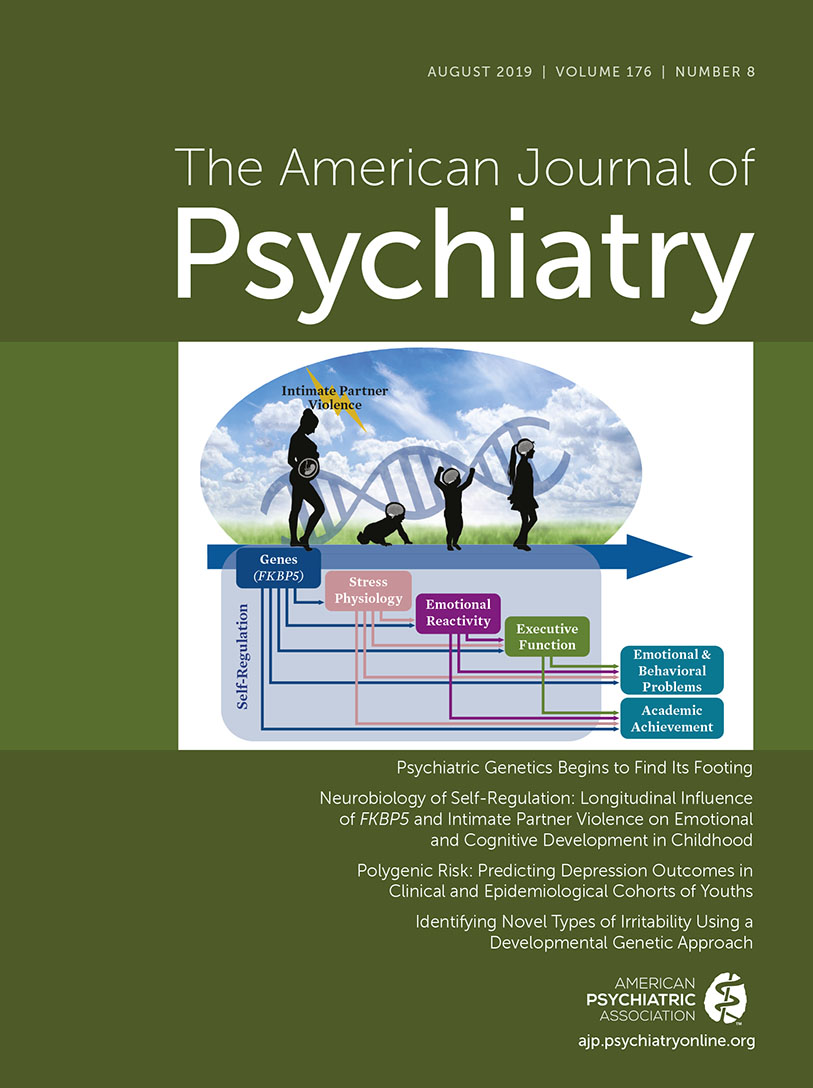Neurobiology of Self-Regulation: Longitudinal Influence of FKBP5 and Intimate Partner Violence on Emotional and Cognitive Development in Childhood
Abstract
Objective:
Self-regulation includes the volitional and nonvolitional regulation of emotional, cognitive, and physiological responses to stimulation. It develops from infancy through individual characteristics and the environment, with the stress hormone system as a central player. Accordingly, the authors hypothesized that genes involved in regulating the stress system, such as FK506 binding protein 5 (FKBP5), interact with early-life stress exposure, such as exposure to intimate partner violence (IPV), to predict self-regulation indicators and associated outcomes, including behavioral and learning problems in school.
Methods:
Study participants were a longitudinal birth cohort of 910 children for whom FKBP5 genotypes were available and who were assessed for exposure to IPV during the first 2 years of life as well as multiple measures of self-regulation: stress-induced cortisol reactivity and fear-elicited emotional reactivity at 7, 15, and 24 months, executive function at 36, 48, and 60 months, and emotional and behavioral difficulties and reading and math achievement in school grades 1, 2, and 5. Data were analyzed using longitudinal clustering and ordinal logistic regression procedures followed by mixed linear modeling.
Results:
Children with two copies of a risk FKBP5 haplotype and IPV exposure were significantly more likely to have a developmental trajectory characterized by high, prolonged stress-induced cortisol reactivity and emotional reactivity in toddlerhood, followed by low executive function at school entry and high emotional and behavior problems and low reading ability in the primary school grades.
Conclusions:
The interaction of FKBP5 and IPV affects the physiological response to stress early in life, with consequences for emotional and cognitive self-regulation. Targeting self-regulation may present an early intervention strategy for children facing genetic and environmental risk.



